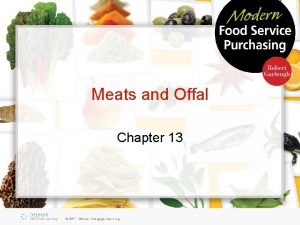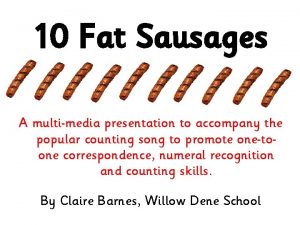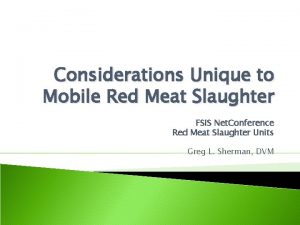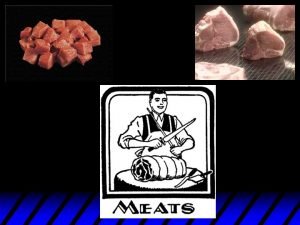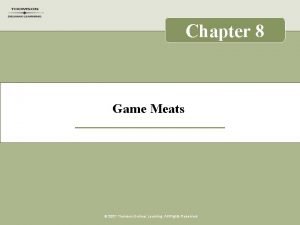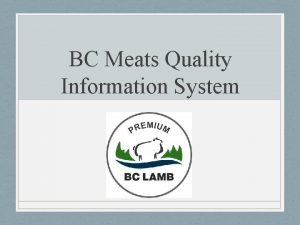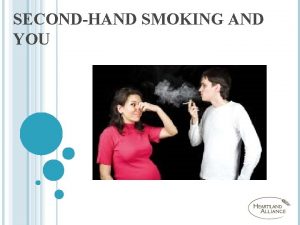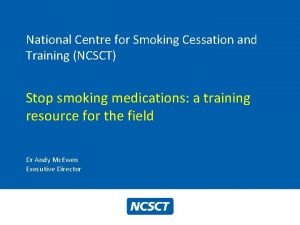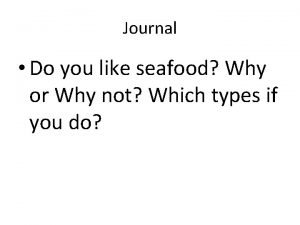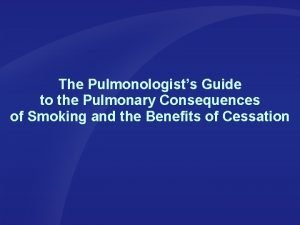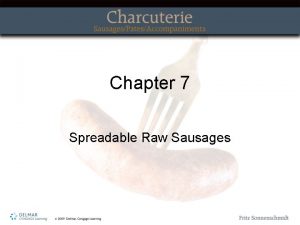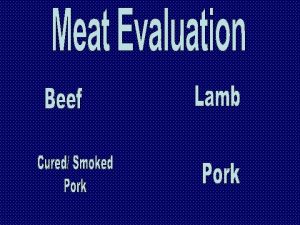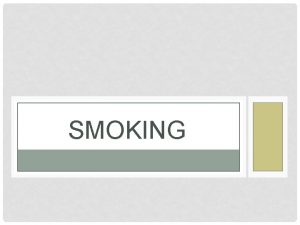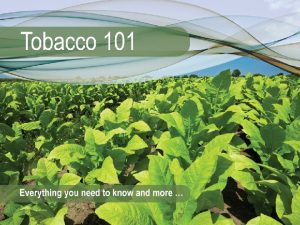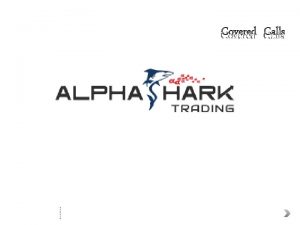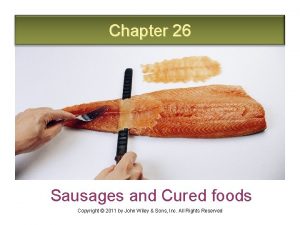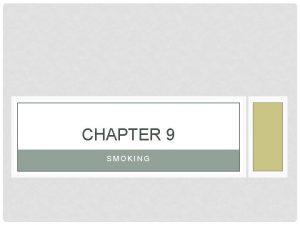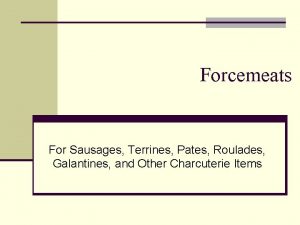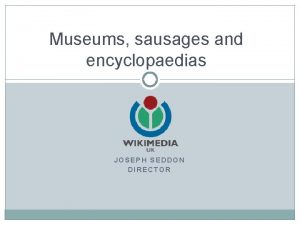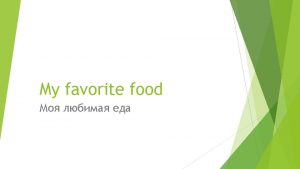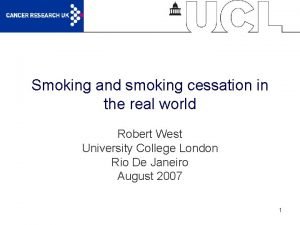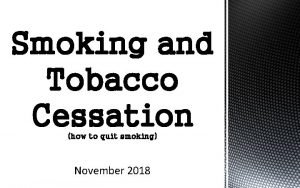Chapter 5 Smoking Sausages and Meats Topics Covered




















- Slides: 20

Chapter 5 Smoking Sausages and Meats

Topics Covered • • • Why Smoke? The Process of Smoking Smokehouses/Smokers How a Smokehouse Operates Preparing Salmon for Smoking

Why Smoke? • • • Preserve Add flavor and aroma Add color Maintain freshness Protect against oxidation

Why Smoke? (cont’d. ) • Cold smoking: – Imparts aroma and flavor – Some drying and weight loss will occur – Temperature for cold smoking is 70°F– 90°F or below – Higher temperature will cause fat to liquefy and may cause rancidity

Why Smoke? (cont’d. ) • For successful smoke absorption: – Sausages and meats need to be air dried before placed in smoker or smokehouse • Allows smoke vapor to cling to surface • Helps color to develop

Why Smoke? (cont’d. ) • Warm smoking: – For light, tender seafood: salmon, trout, catfish, shrimp, and lobster – Done by maintaining a temperature of 85°F to 120°F

Why Smoke? (cont’d. ) • Hot smoking: – Temperatures high enough to cook meat – Adds mild and pleasant smoky aroma – Temperature of 120°F– 180°F – Process takes two to three hours or longer

The Process of Smoking • No precise formula – Thickness, humidity, type of wood, smoke density, amount of meat, and smoking temperature all make a difference

The Process of Smoking (cont’d. ) • Requires close attention: – Check temperatures at all times using an instant-read thermometer – Hardwoods are best for smoking

Smokehouses/Smokers • Range in price and capacity: – $300 to $2000 – 20 lbs to 50 lbs or more • When in use, make sure damper is open wide: – Allows moisture to escape – Keeps sausages from sweating • Never overload

Smokehouses/Smokers (cont’d. ) Smoker

How a Smokehouse Operates • Operation: – Smoke is generated in smoke chamber – Travels up into smokehouse – Exits through damper • Wood selection: – Resin in wrong types (e. g. cedar): • Creates undesirable aromas and tastes • Gives black, sooty appearance – Hardwoods are the best

How a Smokehouse Operates (cont’d. )

How a Smokehouse Operates (cont’d. ) • Use a mixture of wood to create other aromas and flavors • After smoking, cool in cold water to internal temperature of 140°F • Then refrigerate

How a Smokehouse Operates (cont’d. ) • Sodium nitrite: – Used in curing to prevent growth of botulinum toxin and other noxious organisms – Fresh raw sausages and some poached sausages do not require curing salts • Kept refrigerated or frozen • Cooked at high enough temperatures to kill bacterial activity

How a Smokehouse Operates (cont’d. ) • Hobby cooks and professional chefs: – Should buy prepared curing salt – Four ounces nitrites with 100 pounds of kosher (natural) salt and tinted with red dye • Tinted curing mixture (TCM) Kosher salt, sea salt, and curing salt (TCM)

Preparing Salmon for Smoking Salmon with intestines removed Making an incision around the salmon’s head

Preparing Salmon for Smoking (cont’d. ) Continuing the cut over the bone and removing the fillet; the cut is repeated on the other side Removing the pin bones

Preparing Salmon for Smoking (cont’d. ) Salting the salmon Smoking the salmon

Summary • This chapter reviewed: – How to smoke meat and sausages – Flavors various woods impart to smoked foods – The importance of proper temperatures for cold, warm, and hot smoking – Scientific insight into how smoking process works
 Offal define
Offal define What topics will be covered in this unit
What topics will be covered in this unit Murcor mucedo
Murcor mucedo Strawberry is countable or uncountable
Strawberry is countable or uncountable 10 fat sausages
10 fat sausages Market forms of imported meat
Market forms of imported meat Igfc meats
Igfc meats Glandular meats
Glandular meats Continental meats
Continental meats Cat kenning
Cat kenning Thomson meats
Thomson meats Lawrence meats dawson creek
Lawrence meats dawson creek True and false questions about smoking
True and false questions about smoking Ncsct training
Ncsct training 5 physiographic provinces of virginia
5 physiographic provinces of virginia Covered by firm shell and have segmented body
Covered by firm shell and have segmented body 6 kingdom classification
6 kingdom classification First law bar chart
First law bar chart 30 pack year smoking history means
30 pack year smoking history means Curious george smoking a pipe
Curious george smoking a pipe Smoking cessation learning objectives
Smoking cessation learning objectives
